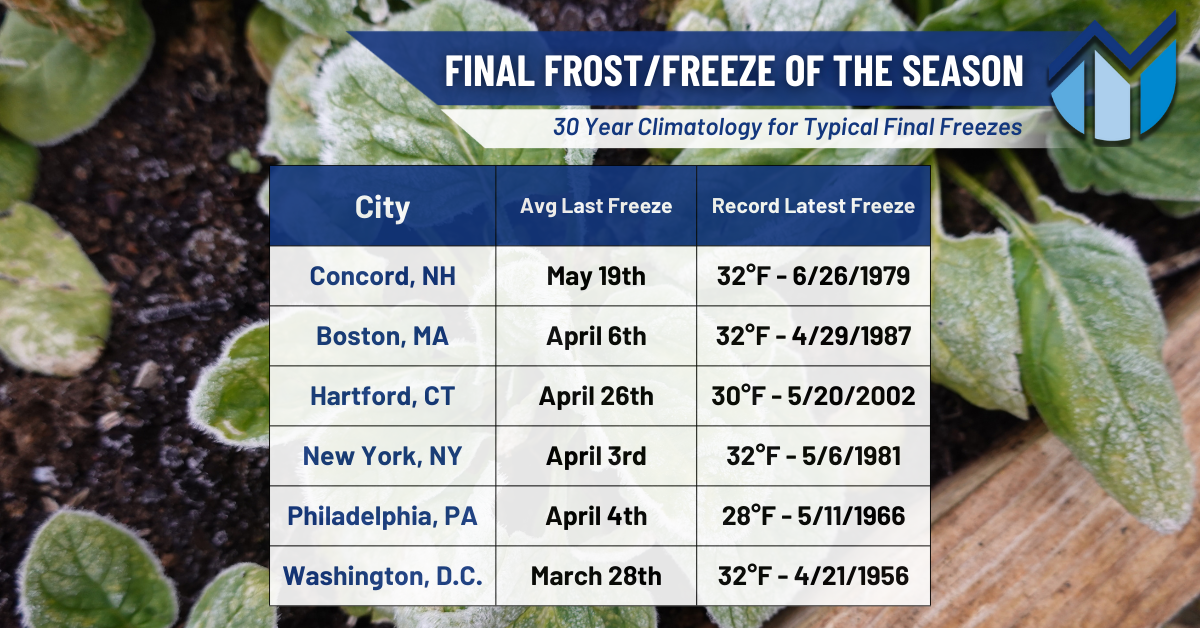

Well, spring is here! However, it always seems like it takes a while to shake off that lingering winter chill. And as the winter and spring season can still battle it out, the next few weeks are especially frustrating for landscapers and gardeners, particularly across the Northeast and Midwestern US. Mother Nature often like's to “trick” sprouting flowers with warm and sunny days, only to be followed by a hard freeze at night...even late season snow! However by definition, the growing season does not officially begin until we have experienced the last freeze. Here is a look at some average "final freeze" dates for select cities:


Just like the end of the growing season in the late Fall months, the beginning of the season in the Spring can be quite tricky for farmers and nurseries. But what is the growing season? Well, it's a time of year, typically when soil temperatures 20 in (50 cm) below the surface are above 40F. For simplicity purposes, it's the time between the last frost of the Spring and the first in the Fall. If the temperature is too cold and the ground can still freeze, the start of the growing season is at risk of being delayed. And the length is determined by minimal low temperatures. Certain ranges have different impacts on plants and crops, which the USDA has laid out nicely below:
